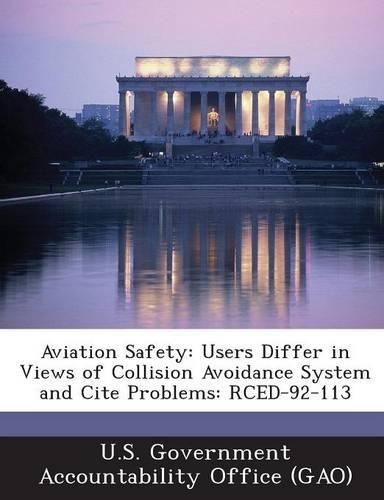Readings Newsletter
Become a Readings Member to make your shopping experience even easier.
Sign in or sign up for free!
You’re not far away from qualifying for FREE standard shipping within Australia
You’ve qualified for FREE standard shipping within Australia
The cart is loading…






Pursuant to a congressional request, GAO reviewed the Federal Aviation Administration’s (FAA) Traffic Alert/Collision Avoidance System (TCAS), focusing on: (1) pilots’ and air traffic controllers’ views on TCAS; (2) FAA actions to address TCAS problems; and (3) key aspects of FAA software development and testing for TCAS, including FAA verification and validation plans for the system. GAO found that: (1) FAA officials believe that TCAS has increased the margin of safety in aviation travel, but some problems have emerged that prevent the system from reaching its full potential; (2) pilots and air traffic controllers with TCAS experience expressed concern regarding such TCAS problems as resolution advisories that have caused pilots to unnecessarily leave assigned airport approaches, go around airports, and reenter landing patterns, excessive altitude deviations pilots have made in response to TCAS, and unnecessary TCAS advisories issued while pilots were following established air traffic control procedures; (3) before installing TCAS in commercial aircraft, FAA verified that TCAS performed in accordance with its specification, but did not validate a key element of TCAS, the collision avoidance requirements; (4) FAA plans to develop system-level specifications and perform full TCAS verification and validation by the end of 1992; (5) opinion within the aviation industry is sharply divided on whether FAA should fully verify and validate TCAS and the modifications before implementing the modifications, since neglecting current problems could reduce pilots’ confidence and present a greater risk; and (6) FAA plans to implement the modifications before completing verification and validation.
$9.00 standard shipping within Australia
FREE standard shipping within Australia for orders over $100.00
Express & International shipping calculated at checkout
Pursuant to a congressional request, GAO reviewed the Federal Aviation Administration’s (FAA) Traffic Alert/Collision Avoidance System (TCAS), focusing on: (1) pilots’ and air traffic controllers’ views on TCAS; (2) FAA actions to address TCAS problems; and (3) key aspects of FAA software development and testing for TCAS, including FAA verification and validation plans for the system. GAO found that: (1) FAA officials believe that TCAS has increased the margin of safety in aviation travel, but some problems have emerged that prevent the system from reaching its full potential; (2) pilots and air traffic controllers with TCAS experience expressed concern regarding such TCAS problems as resolution advisories that have caused pilots to unnecessarily leave assigned airport approaches, go around airports, and reenter landing patterns, excessive altitude deviations pilots have made in response to TCAS, and unnecessary TCAS advisories issued while pilots were following established air traffic control procedures; (3) before installing TCAS in commercial aircraft, FAA verified that TCAS performed in accordance with its specification, but did not validate a key element of TCAS, the collision avoidance requirements; (4) FAA plans to develop system-level specifications and perform full TCAS verification and validation by the end of 1992; (5) opinion within the aviation industry is sharply divided on whether FAA should fully verify and validate TCAS and the modifications before implementing the modifications, since neglecting current problems could reduce pilots’ confidence and present a greater risk; and (6) FAA plans to implement the modifications before completing verification and validation.